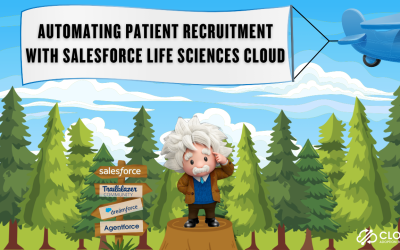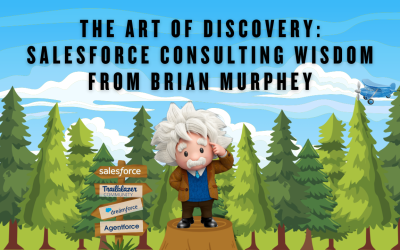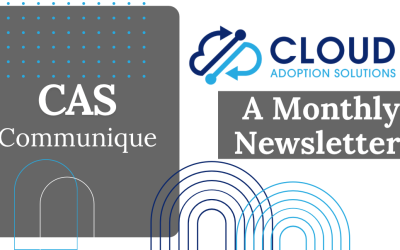Life sciences companies push out a LOT of proposals. If you’re in life sciences or in a company with a high volume of proposal activity, building a Custom Proposal Object in Salesforce will be a lifesaver! A custom proposal object can help you to track proposal status, handoffs, and metrics.
Join Natalie, Head of Operations & Client Delivery, as she shows you how a Custom Proposal Object in Salesforce.com can help solve your TAT, visibility, or other proposal issues.
Contact us with your Salesforce challenges at info@cloudadoption.solutions – we love to help!
Cloud Adoption Solutions is a 100% woman-owned registered Salesforce partner, specializing in implementation, integration, and optimization for Technology, Healthcare/ Life Sciences, and Financial Services/ Professional Services organizations in the small and mid-commercial sectors.
VIDEO TRANSCRIPT:
Hi, everyone, today we’re going to talk to you about a custom object for proposals. Typically, in any life sciences organization, you have a sales team. And you have a proposal team and the two are working together on a high volume basis. And most of the time, they interact with each other via email, phone calls, or by any third party method. And what can bring these two groups together is Salesforce.
So our solution to strengthen the relationship between sales and the proposal team and to also make a proposal manager’s life a little bit more, less crazy, we’ll say, is by bringing together an opportunity record and a proposal record. So we’re going to show you today how we do that.
What I have on the screen is an opportunity record. And it’s at a stage where sales needs to engage proposal team member so that they can request a piece of content that needs to go to the client. And we’ll take a look at this opportunity here as a closed date of September 30. It’s for COPD, it’s a new customer. And what we’re going to do is request a proposal. And that way, we can begin the engagement process between sales and the proposal team. So over on the right side, here, I have a related list called proposals, you can see that there are already two out there two full proposals that have been requested.
What we’re going to do today is create a third request, and try and get some changes made to those proposals that have already been requested. So this brings up a new form. And what sales will basically do here is fill out some fields that will indicate what their needs are, the status of the request is always going to begin as new. And as you can see, you can go through many stages. We’re going to pick a proposal type. And in this case, we’re going to choose a change order.
Since we have a couple of proposals out there already, this is going to be a change order. In relation to those existing proposals. We’re going to select a due date that the client is looking to have this proposal received back. And sales is just going to make a few comments here requesting a change order due to protocol update. And if you wanted, you could add a scope of service field, we’re just going to select service one in this instance. And right now we’re just going to hit save. And this is going to create the proposal request record.
Now, typically what you would do at this point, you have a proposal team waiting in a queue, waiting to have this proposal assigned. And what that proposal team member would do is come to this new object and click on the record. You can set up a notification process for this. Also, if you wanted an email to get blasted to the proposal team, when a proposal was created, you can do that. You can also set up an alert, which will show up under the little bell over here on the right side under notifications, you can have that have the red highlight.
But in this instance, we’re at the point where the proposal coordinator received this in their queue. And now they’re going to take a look at their request and start working on it. They see it’s a change order. They’re going to work through making those needed changes. And while they’re on this, they’re going to populate who that proposal coordinator is going to be. So who’s going to be handling this proposal. And once it’s said and done, they’re going to populate a due date as far as when they send it back to sales. And as you can see down here, we’re creating a history on this record. They could even go as far as to upload a copy of the change order here on the record, so that anyone who has access to the opportunity can see this.
And they’re gonna move it through their stages as well. So you can see, we have in progress, we have on hold waiting on sales, sometimes the proposal group is waiting for sales to provide necessary documentation or maybe a copy of that updated protocol. Sometimes things are on hold, and it’s not sales f’ault. So we created a stage for that. And we also have completed it. And once the proposal’s marked completed, you can mark it as the status. Not only do you see a celebration here, but you can also see that this notification has lit up. So this tells me, oh, my proposal was complete.
Also, earlier, when you saw me assign the proposal, a notification went out for that purpose, too. So lots of things you can do with this. As far as reporting, you can create a couple of different methods, one would be a list view. So if you want to see a view of all of the outstanding proposals, sort them by their due dates, just to see how much work is coming in or what work still needs to be distributed. You can filter by proposal coordinator. So if you just want to see things that are assigned to a specific person, you can do that. And this gives you a quick glance at, you know, bandwidth workload, and what is outstanding for the month. digging a little bit deeper into some proposal metrics. Typically, you can see things such as proposal by status, proposals by type, how many have been created for the month. You can also see based upon the amount of the proposals, what is set to close. So how much proposal volume are we working on this month, you can see it individually by the opportunity in this view. You can break it down by coordinator and then also by a lump sum.
And this is just the tip of the iceberg with what you can do with proposal metrics. You can add a filter that to this dashboard, which will also tell you if you wanted to filter by coordinator. So if I just want to see all of Natalie’s work, we can just see work for that particular person. Or if I’m just interested in seeing anything that’s a full proposal, you can group this dashboard in that manner as well. So as you can see, by building a custom object with just a few fields, not only can you bring two departments together, but you can house all that same information within Salesforce, and that way everyone is focused on the task at hand and is always aware of the status.
Please reach out if you have any questions or we can help at all – info@cloudadoption.solutions




